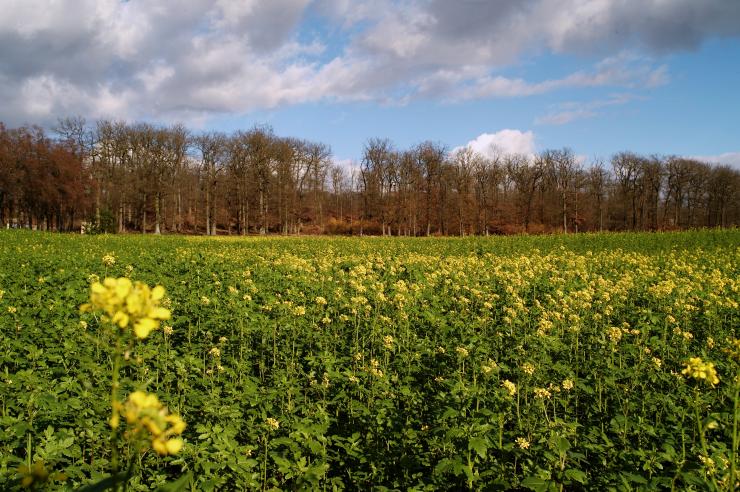Agroecology Reading time 2 min
Research into each element of conservation agriculture
Published on 13 November 2013
Intermediate crops, a valuable asset
One of the core elements of conservation agriculture is soil coverage, and in this intermediate crops play a key role. Unlike catch crops, intermediate crops are not intended for commercial sale. Intermediate crops provide ecosystem services, as was evaluated in a 2012 report1. The primary ecosystem service studied by the report is the ability of the intermediate crops to fix nitrates2, although a number of other services are also particularly important in no-till systems, like enriching the soil with organic matter, which leads to improved soil structure, and a partial control of weeds. The report revealed that it is sometimes necessary to make choices among the various beneficial effects of intermediate crops and thus take diverse actions, including adapting intermediate crop practices to no-till systems when false seedbed techniques are used.

HT varieties, use with discretion
An expert report prepared in 2011 by INRA and CNRS3reviewed current knowledge of herbicide-tolerant (HT) plant varieties. In North and South America, there are genetically engineered HT varieties of cotton, soybean, maize, rapeseed, and beetroot that are tolerant to glyphosate, a systemic Class G herbicide. These HT varieties allow for effective weeding that can be combined with no-till practices, notably direct seeding. In France, HT varieties that tolerate selective Class B herbicides (imidazolinones and sulphonylureas) have been obtained through mutation, both spontaneous and induced, mostly for sunflower and rapeseed.
Seule une utilisation limitée dans le temps et l’espace permettra d’en préserver l’efficacité.
In all cases, the report underscored the risks involved with the large-scale development of HT varieties if they are used exclusively throughout the crop rotation cycle. The use of HT varieties is only effective if it is limited in both time and space and is accompanied by the introduction of diversified crop rotations and the concomitant application of supplementary weed control strategies. Studies have shown that after ten years of intensive HT variety use in the United States, with 80% coverage for HT cotton and soybean varieties, herbicide use increased in order to control species that had become less sensitive to, or even tolerant of, glyphosate. In France, less land is under HT variety cultivation (approximately 13% of surfaces for sunflower in 2013), but the HT varieties are tolerant to herbicides that are already widely used for grain crops. This increases the risk of the onset of resistance in weeds in grain–oilseed rotations. Current guidelines recommend the use of several herbicides on the HT crop, with the attendant risk of, in certain situations, exceeding herbicide use registered for non-HT crops. There is also a risk that the gene for tolerance will be transmitted to related weed species, like the wild, perennial sunflower, which are free-flowering and have high seed dispersal rates. Lastly, invasive species like ragweed can develop resistance through spontaneous mutation and cases of Class B herbicide-resistant ragweed have already been identified in other countries.
Crop diversification
A 2013 study4identified the major incentives and obstacles to diversifying crops at agribusiness industry stakeholder and farmer levels. The study suggested that crop diversification could disrupt the highly specialised production schemes of the agribusiness industry while also creating new such schemes.
1 Report conducted by INRA and commissioned by France’s ministers responsible for agriculture and for ecology as a part of the European Union Nitrates Directive.
2 CIPAN (Nitrogen-fixing intermediate crops). The study demonstrated that, in most situations tested, nitrogen-fixing intermediate crops are effective in reducing nitrate leaching, and thereby reducing the concentration of nitrate in drainage water. In 2012, it became mandatory to cover the soil before the spring in areas identified as vulnerable by the EU Nitrates Directive.
3 Expert report carried out by CNRS and INRA and commissioned by France’s ministers responsible for agriculture and for ecology.
4 Study carried out by INRA and commissioned by France’s ministers responsible for agriculture and for ecology.
